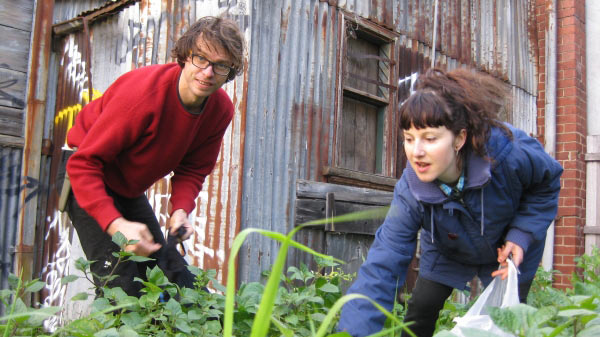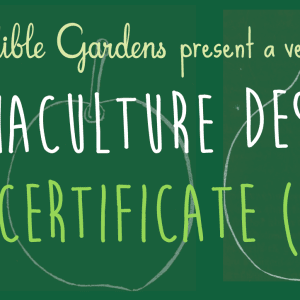No-Dig Gardening
The no-dig gardening concept was popularised by Sydney gardener Esther Dean in the 1970s as a way of minimising gardening effort while kick-starting a garden with maximum fertility. Any more fertility and you’re likely to have triplets. A no-dig garden consists of layers of organic material that are stacked up to form a rich, raised garden area. The no-dig garden can be whatever height you desire. Vegetable seedlings, flowering annuals, herbs, bulbs and strawberries all thrive in a no-dig garden.
Why?
- This type of garden can be set up anywhere – over a lawn, inside a box frame, or even over concrete.
- No-dig gardens are quick and easy to make.
- If your soil is not ideal for veggie growing, a no-dig garden creates a great soil mix to plant into.
- No-dig gardens are very fertile as the decomposing organic matter quickly becomes rich, black compost and attracts beneficial micro-organisms.
- It retains moisture well.
- It discourages the growth of weeds as the soil is not turned over (burying weed seeds in moist soil).
Materials

- Newspaper (let’s turn bad news into good!)
- A decent amount of blood-and-bone or chicken manure (if building garden over grass or weeds)
- A largish amount of bulk manure – e.g., horse, cow, sheep or wildebeest – think grazing animal
- High carbon (usually brown) organic material – e.g., straw, autumn leaves or dry grass clipping
- Compost (black, rich, broken down organic matter)
How to make a no-dig Garden
If you’re building a bed over concrete, place a 10cm layer of dry branches onto the concrete to allow air into the bed, and head to Part 2.
If you’re building over earth that has few weed problems, you can proceed straight to Part 2.
Part 1: the ‘sheet mulch’
Sheet mulching is where we create:
- A physical barrier to weeds with a biodegradable layer — in this case newspaper or cardboard
- Anaerobic (low oxygen) conditions under the barrier which kill the weeds
Now in general we don’t want anaerobic conditions in our soil. They stink, and they kill plant roots. But you have to break a few eggs to make an omelette, right? Well in this case we’re making something more like a rotten egg funk. (Don’t worry though, it will be underneath newspaper so you won’t smell it!)
This is a one time only establishment technique. It’s best done in warmer months, as this helps create the conditions that we need to rot the weeds.
- Slash the grass or weeds
- Over the slashed area, sprinkle with blood-and-bone or chicken manure, and water it in. This will create the anaerobic skank. And it will also help the newspaper break down over time. Think around a good handful or two per square meter.
- Soak your newspaper or cardboard in water (e.g., in a wheelbarrow).
- Cover the area with thick layers of the damp newspaper (at least 6 pages thick — more if any runner gasses like couch or kikuyu grass are present), overlapping by 10-15 cm. Be thorough!

Tip: bike shop cardboard can be great as it’s huge and you get the job done a lot faster.
Part 2: the no-dig ‘lasagne’ garden
Now we’re going to build up our materials in layers, just like we were making a delicious baked pasta dish.
- Soak your high-carbon brown material in water
- On top of the newspaper layer, alternate the following –
- 10cm of the soaked “brown organic material” (e.g., autumn leaves or straw)
- 5cm of manure – e.g., horse, cow, sheep
- Water well after each layer is added
- Keep adding these layers until you get to your desired height. We recommend building up the garden at least 30-40cm.
- Make sure that the top layer is the brown organic material, which acts as a great mulch to suppress weeds, hold water and insulate the soil
- To plant seedlings, pull aside the mulch and add one or two handfuls of compost to the hole that you’ve created. Make a hole in the compost and plant the seedling into this compost.
NOTE: The no-dig garden will approximately halve in height in the first six months as it composts away. Therefore, if for example you want a 30cm high vegie bed, build a 50-60cm no-dig garden.
In this time the layers that you put down will turn into fertile black compost. After these few months any vegetables should grow very well in the no-dig garden. However, in those first 2-4 months (the first growing season of the bed), the following vegetables will not grow especially well in a no-dig garden, so don’t be disheartened:
- Root vegetables – e.g., carrots, onions, beetroot
- Beans or peas.
These veggies will grow well from the second season onwards.
To maintain the health of the no-dig garden area, VEG recommends adding home-made compost at least once a year (the start of spring), but preferably twice a year (the start of spring and the start of autumn). See the VEG compost info sheet or come to a VEG compost and worms course to learn the keys to increasing soil health.
We can also heartily recommend some VEG cypress garden edging for no-dig gardens that are 40cm or higher.



